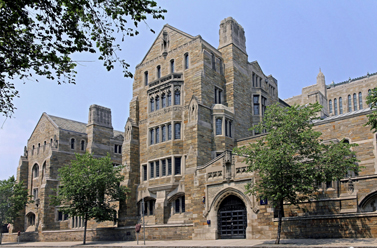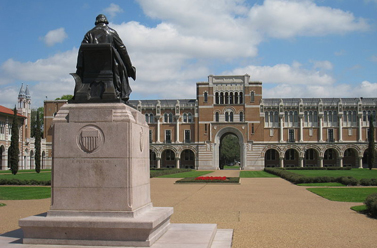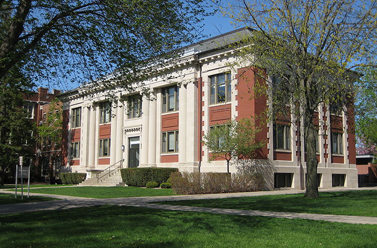Best Values in Private Colleges, 2014
From small jewels to Ivy League powerhouses, these top 100 private colleges and universities deliver quality and affordability.
Washington and Who? If you don’t hail from the South, you may be unfamiliar with Washington and Lee University. But this pint-size liberal arts college is making a name for itself as an outsize undergraduate value. Number one for the first time on Kiplinger’s liberal arts list, it has been flirting with first place for several years, landing in our top ten consistently since 2007.

Yale University in New Haven, Conn. Thinkstock
Our top private university needs no introduction. Yale heads our ranking for the second consecutive year. Yale meets 100% of need and extends need-based aid to families earning as much as $200,000 per year. The average net price weighs in at $15,435.

Sign up for Kiplinger’s Free E-Newsletters
Profit and prosper with the best of expert advice on investing, taxes, retirement, personal finance and more - straight to your e-mail.
Profit and prosper with the best of expert advice - straight to your e-mail.
With a 7% admission rate (the lower the rate, the more competitive the school), Yale turns away all but the best and the brightest in each freshman class. Only Harvard, fourth in our rankings, is more selective, with a 6% admit rate. A five-to-one student-faculty ratio keeps the brainiacs engaged, and the 89% four-year graduation rate helps students enter the job market on time, avoiding an extra year of tuition.
Sticker Versus Net Price
Every year, readers question how an institution like Yale, which charges more than $50,000 a year, can possibly be a good value. The answer is simple: Sticker price does not equal net price. The average total cost of a private college or university is about $40,000 a year, but private institutions’ abundant need- and merit-based aid means that most families pay about half the advertised price. “The financial aid that’s provided by these national liberal arts colleges and private universities is extraordinarily generous,” says David Warren, president of the National Association of Independent Colleges and Universities.

Rice University in Houston, Tex. Daderot via Wikimedia Commons
Although most top-tier schools offer only need-based aid, a few (including Washington and Lee) award generous merit aid, too. Third-place Rice University gives an average of $12,068 in non-need-based aid to more than one-fourth of its students who don’t qualify for need-based aid. Vanderbilt (number 11) offers $24,788, on average, to almost 20% of such students. Further down the lists, you’ll see more liberal arts and private universities offering merit aid to entice high-achieving students onto their campuses.
Keeping Costs Down
Private four-year schools are pumping the brakes on tuition increases. This year, private institutions raised tuition by an average of 3.56%, according to the NAICU. That’s the lowest increase in four decades. “I think the Great Recession reset the whole understanding of affordability, access and price elasticity,” says Warren. “These colleges are absolutely determined to drive down their operating costs.”
Run your finger down the total cost column of our private university rankings and you’ll see price tags ranging from nearly $50,000 to more than $60,000. That is, until you reach Elon University, at number 22. The total cost is $40,946. Unlike many of the schools on our list, this private university in North Carolina uses a “low tuition, low discount” cost model. That means what you see in terms of sticker price is more or less what you get.
The reason? The school wants to entice students who are waffling between Elon and the top-notch public flagship universities in the region, such as the University of North Carolina at Chapel Hill (last year’s number-one public college in Kiplinger’s rankings), the University of Virginia (number two) and the University of Maryland (number five). Elon’s tuition competes with the out-of-state tuition charged by its rivals. “We’ve got costs at the very top of mind,” says President Leo Lambert.
In order to keep prices low without leaving academics in the dust, Elon is a “lean, mean place,” says Lambert. The school gives priority to funding academics, study-abroad scholarships and need-based aid. It eliminates overlaps in staffing and takes a preventive approach to campus maintenance work. “If you’re not replacing roofs and windows, pretty soon you’re replacing entire buildings,” says Lambert.

But keeping prices low is a balancing act, and a lower sticker price is matched by less-generous financial aid. Right now, average need-based aid is $13,628 -- $10,000 to $20,000 lower than the aid packages offered by its private university peers. The net price is $27,318, matching the net price of private universities in our rankings. Lambert says that need-based aid will grow: Elon aims to double it by 2020. Meanwhile, the low sticker price appeals to families who don’t expect to qualify for aid.
Other standouts include two midwestern liberal arts colleges: Grinnell College (number ten), in Grinnell, Iowa, and Carleton College (number 12), in Northfield, Minn. Both jumped seven spots this year.
Grinnell owes its bump to stronger academics. A 36% admissions rate blows last year’s 50% out of the water. Improved graduation and retentionrates, plus higher test scores among incoming freshmen, give it an extra lift. Carleton College boosted its graduation rates and lowered the averageamount of debt that students carry at graduation. Among private universities, Johns Hopkins (number 16) moved up seven places, thanks in part to higher graduation rates and a reduction in average undergraduate debt.
Our New Number One
Located in tiny Lexington, Va. (population: 7,000), Washington and Lee takes its name from endower George Washington and one-time college president Robert E. Lee. As America’s ninth-oldest college (founded in 1749), it’s the kind of place where building renovations become archaeological digs (recent work on Robinson Hall turned up thousands of artifacts, including bone toothbrushes, pen nibs and Civil War-era artillery). The campus “speaking tradition” dictates that students and faculty greet everyone they pass on campus. W&L’s honor code lets students leave backpacks unattended on campus and schedule and self-proctor their final exams.
Washington and Lee boosted the average amount of need-based aid by 7% compared with last year. Upping need-based financial aid is a goal,and the school seeks to increase it by $160 million. W&L is about $120 million into its fund-raising campaign. For senior Anton Reed, who was also considering the University of Pittsburgh, W&L’s financial aid package drew him to the school. “My financial aid was significantly better at Washington and Lee than at Pitt, even though Pitt is a less expensive school,” says Reed. And affordability extends beyond generous financial aid in a town where students pay only about $400 per month in rent.
But whether students get a break or pay the sticker price, President Ruscio says the college still delivers on value. “We want people here to think that this education is worth it, even for those who are paying the full freight.”
Get Kiplinger Today newsletter — free
Profit and prosper with the best of Kiplinger's advice on investing, taxes, retirement, personal finance and much more. Delivered daily. Enter your email in the box and click Sign Me Up.
Susannah Snider worked as a research-reporter and staff writer at Kiplinger Personal Finance Magazine. She went on to serve as managing editor for money at U.S. News, overseeing articles and content covering real estate, personal finance and careers. She is a certified financial planner professional and earned her CFP marks in 2019.
-
 Stock Market Today: Stocks Soar on China Trade Talk Hopes
Stock Market Today: Stocks Soar on China Trade Talk HopesTreasury Secretary Bessent said current U.S.-China trade relations are unsustainable and signaled hopes for negotiations.
By Karee Venema
-
 2026 Disney Dining Plan Returns: Free Dining for Kids & Resort Benefits
2026 Disney Dining Plan Returns: Free Dining for Kids & Resort BenefitsPlan your 2026 Walt Disney World vacation now. Learn about the returning Disney Dining Plan, how kids aged three to nine eat free, and the exclusive benefits of staying at a Disney Resort hotel.
By Carla Ayers
-
 Roth IRA Contribution Limits for 2025
Roth IRA Contribution Limits for 2025Roth IRAs Roth IRA contribution limits have gone up. Here's what you need to know.
By Jackie Stewart
-
 Four Tips for Renting Out Your Home on Airbnb
Four Tips for Renting Out Your Home on Airbnbreal estate Here's what you should know before listing your home on Airbnb.
By Miriam Cross
-
 Five Ways to a Cheap Last-Minute Vacation
Five Ways to a Cheap Last-Minute VacationTravel It is possible to pull off a cheap last-minute vacation. Here are some tips to make it happen.
By Vaishali Varu
-
 How to Figure Out How Much Life Insurance You Need
How to Figure Out How Much Life Insurance You Needinsurance Instead of relying on rules of thumb, you’re better off taking a systematic approach to figuring your life insurance needs.
By Kimberly Lankford
-
 Amazon Big Deal Days Is Coming! We’ve Got All the Details
Amazon Big Deal Days Is Coming! We’ve Got All the DetailsAmazon Prime To kick off the holiday season with a bang, Amazon Big Deal Days runs Tuesday, October 8 and Wednesday, October 9.
By Bob Niedt
-
 How to Shop for Life Insurance in 3 Easy Steps
How to Shop for Life Insurance in 3 Easy Stepsinsurance Shopping for life insurance? You may be able to estimate how much you need online, but that's just the start of your search.
By Kaitlin Pitsker
-
 Five Ways to Shop for a Low Mortgage Rate
Five Ways to Shop for a Low Mortgage RateBecoming a Homeowner Mortgage rates are high this year, but you can still find an affordable loan with these tips.
By Daniel Bortz
-
 Retirees, It's Not Too Late to Buy Life Insurance
Retirees, It's Not Too Late to Buy Life Insurancelife insurance Improvements in underwriting have made it easier to qualify for life insurance, which can be a useful estate-planning tool.
By David Rodeck